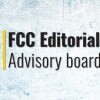An ill-advised amendment effort to reduce school public notices is a direct assault on the transparency of Minnesota’s public schools. This move not only undermines the spirit of Minnesota's open government but also threatens to obscure crucial information from the public eye.
If passed, the omnibus education bill (SF3567) in the Minnesota Senate would grant all school districts the authority to remove their public notices from widely circulated newspapers, heavily visited websites and the Minnesota Newspaper Association's public notice website. This means the majority of school districts’ websites, which are often underutilized, poorly structured, and difficult to navigate, would become the primary source of school districts’ public notices.
ADVERTISEMENT
The Minnesota ÍáÍáÂţ» Boards Association is leading this proposal to reduce the transparency of local school boards in Minnesota. Yes, this bill would save school boards some public notice spending, but it would significantly decrease access for school district residents.
Shame on the .
If this bill is enacted, Minnesota newspapers will lose some revenue, but the bigger losers would be residents and taxpayers. While newspapers will continue to cover local school board meetings and school athletics and activities, the public notices will be published on school websites with little web traffic and remain solely within the control of school officials and board members.
Who will be watching those school board officials? After significantly increasing school funding last year, does the Legislature really trust all school boards to fiscally and effectively control spending? More importantly, can taxpayers trust their school boards to manage their budgets effectively without transparent public notices?
Those public notices include the school board meeting minutes and financial statements. Taxpayers would lose quick, easy and familiar access to those public notices.
One wonders what exactly is the Minnesota ÍáÍáÂţ» Boards Association trying to hide?
The ÍáÍáÂţ» Boards Association claims that some newspapers have closed or reduced their reach in recent years and that publishing public notices on their own websites will save money. However, school websites and social media often have minimal traffic, compared to local newspapers.
ADVERTISEMENT
Most school districts’ social media accounts have significantly fewer followers compared to the local newspaper. And the local newspaper’s website is often the highest web traffic site in local communities. Readers are drawn to local news and, in turn, public notices.
The supports a House-passed bill that allows for a temporary exception to school districts where local newspapers have closed, such as Scott County, where several newspapers cease operations this week. Newspapers believe that is a reasonable approach to temporary news desert situations.
In addition, the public notices published in Minnesota newspapers are also published on the website ( ) free of charge by your local newspaper and the Minnesota Newspaper Association.
The Minnesota Newspaper Association is fighting this proposal in the Minnesota Legislature . SF3567 goes too far and “is contrary to the spirit of transparency that underpins democracy and Minnesota’s open-government history.” In addition, the newspaper association believes this proposal “has not been thoroughly vetted or discussed by the Legislature.” Adding this issue as an amendment to the omnibus education bill without ever having any discussion of it is a very poor process.
This newspaper, the FCC Editorial Advisory Board and Forum Communications Co. management urge local superintendents, their local school boards and the Legislature’s conference committee to reject the idea of reducing public access to public notices by Minnesota school boards.
The Mankato Free Press Editorial Board contributed to this Forum Communications Co. editorial.
This editorial is the view of the FCC Editorial Advisory Board and Forum Communications management.


















